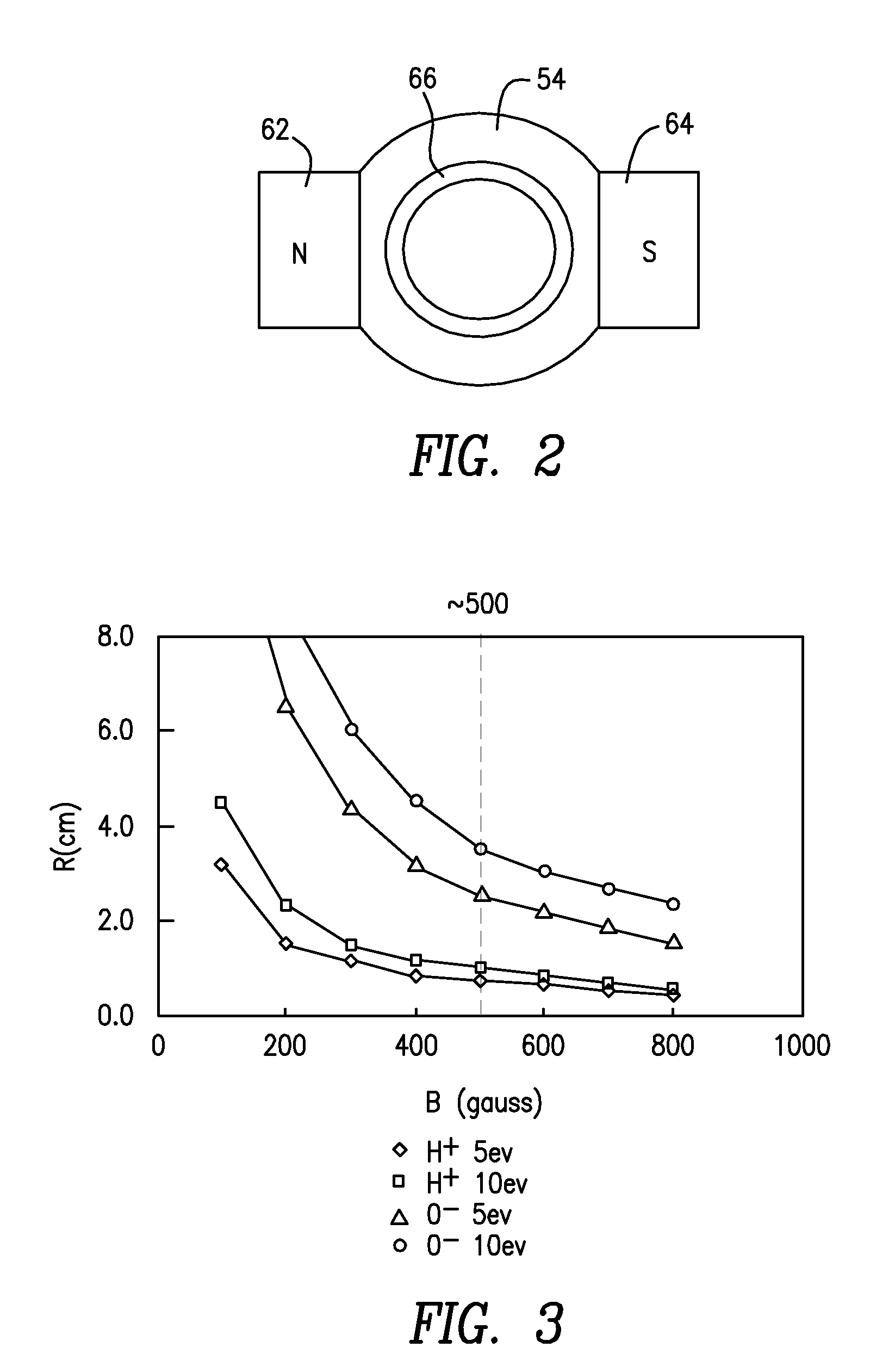Remote Hydrogen Plasma With Ion Filter for Terminating Silicon Dangling Bonds
a technology of ion filter and hydrogen plasma, which is applied in the direction of electric discharge tubes, basic electric elements, electric discharge tubes, etc., can solve the problems of poor doping ability of amorphous si:h (a-si:h), adverse effects of doping on a-si:h layer quality, and inability to manufacture p-n-type diodes for solar cells
- Summary
- Abstract
- Description
- Claims
- Application Information
AI Technical Summary
Benefits of technology
Problems solved by technology
Method used
Image
Examples
Embodiment Construction
[0030]Before describing several exemplary embodiments of the invention, it is to be understood that the invention is not limited to the details of construction or process steps set forth in the following description. The invention is capable of other embodiments and of being practiced or being carried out in various ways.
[0031]As used in this specification and the appended claims, the singular forms “a”, “an” and “the” include plural referents unless the context clearly indicates otherwise. For example, reference to a “superstrate” may also refer to more than one superstrate, and the like.
[0032]According to an embodiment of the invention, a practical and effective way to greatly improve the efficiency of generating ion-free H radicals and the H radicals to passivate silicon dangling bonds is provided. In one embodiment, a remote hydrogen plasma source with an ion filter (e.g., RPS system on top of a PECVD chamber) can be employed. The hydrogen radicals (without ions) can be introduc...
PUM
 Login to View More
Login to View More Abstract
Description
Claims
Application Information
 Login to View More
Login to View More - R&D
- Intellectual Property
- Life Sciences
- Materials
- Tech Scout
- Unparalleled Data Quality
- Higher Quality Content
- 60% Fewer Hallucinations
Browse by: Latest US Patents, China's latest patents, Technical Efficacy Thesaurus, Application Domain, Technology Topic, Popular Technical Reports.
© 2025 PatSnap. All rights reserved.Legal|Privacy policy|Modern Slavery Act Transparency Statement|Sitemap|About US| Contact US: help@patsnap.com



